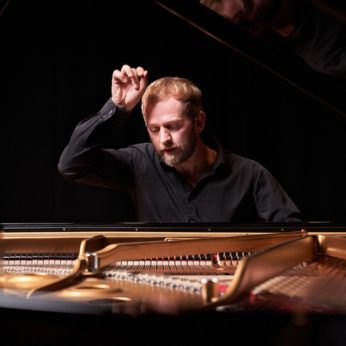Composer: Ludwig Thuille (b. 1861 - d. 1907)
Performance date: 29/06/2022
Venue: St. Brendan’s Church
Composition Year: 1888
Duration: 00:29:33
Recording Engineer: Simon Cullen, Ergodos
Instrumentation: fl, ob, cl, bn, hn, pf
Instrumentation Category:Sextet
Artists:
Orsino Ensemble (Adam Walker [flute], Emmanuel Laville [oboe], Matt Hunt [clarinet], Alec Frank-Gemmill [horn] Bram van Sambeek [bassoon]) -
[Wind Quintet]
Alasdair Beatson -
[piano]

Ludwig Thuille [1861-1907]
Sextet in B flat Op.6 for Piano and Winds [1888]
1. Allegro moderato
2. Larghetto
3. Gavotte: Andante quasi allegretto
4. Finale: Vivace
Thuille has been described as unjustly relegated to a footnote in accounts of the early life of his friend Richard Strauss. The friendship between the two men, begun when they were both children, lasted until Thuille’s early death at 45, and letters kept by Thuille have been an invaluable source for Strauss scholars. Orphaned when he was ten, Thuille was indebted to the widow of composer Matthaus Nagiller for subsidising his musical education. It was she who introduced Thuille to Strauss. However, if he is largely forgotten as a composer, he is remembered as more than a mere childhood friend of Strauss. While in his day he achieved reasonable success as a composer, conductor and pianist, he is better remembered as a teacher and academic, publishing books and teaching composition in Munich, and a leader of the so-called Munich School of composers.
But wind ensembles, who are sadly bereft of wide-ranging repertoire, can be glad that this Sextet has not been forgotten. Well-received and appreciated at the time by the press and public, it is probably now Thuille’s best-known composition. He began the work in 1886 and dedicated it to Emma Dietl, whom he married in 1887. He played the piano part himself at the premiere in 1889 – the part is demanding and gives us an idea of Thuille’s skills as a pianist. But Thuille it seems was not a selfish composer – each instrument is given its moment to shine and for the wind performers to display their talent. Thuille was also not a radical composer, tending more to conservative techniques. Rather than pushing the limits of sound techniques or harmonies, this piece allows the performers to show off how beautiful their instruments can sound, and how well they can sound together.
The opening is simply delightful – melodious, intricacy blending with exquisite harmony. It is the sort of music that creates marvellous contentment from simply listening and hoping it will never stop. There is a gradual build-up of momentum and sound before the majestic horn melody from the opening returns. Indeed in this first movement, the momentum is frequently disrupted by the return of the relaxed mood of the opening. The solemn horn melody opening the second movement is followed by almost subdued piano strains. While the subdued quality isn’t constant throughout the movement, the tone remains dignified. By contrast the third movement is playful, with the interesting choice of a dance, the Gavotte, as the form. But is hardly the stately dance of the French Renaissance court, for while it begins simply enough the music grows in intricacy and creates a whirlwind effect, with moments of relative calm, perhaps to indicate the excited ebb and flow of happy dancers. The finale is high-spirited and energetic without losing the balance between the instruments. A delightful close to a delightful piece.
Helen Dawson
Copyright © 2024 West Cork Music. All rights reserved.
Designed and developed by Matrix Internet